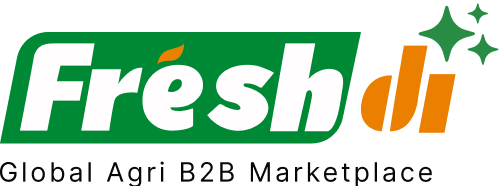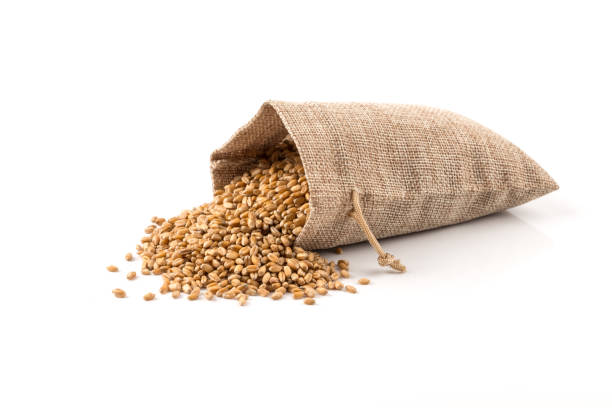Introduction – Current State of Play: The Wheat Sector in United States
The U.S. wheat market is entering Quarter 3 of 2025 with a whirlwind of changes. From shifting weather patterns and geopolitical trade dynamics to an uptick in global demand and tariff-driven supply chain realignments, the game is changing fast. Businesses sourcing wheat from the United States must now be sharper than ever.
Just recently, the USDA forecasted U.S. wheat exports to soar to 825 million bushels—marking the highest level since the 2020/21 season. That’s a big jump, and it’s fueled by both larger domestic supplies and improved price competitiveness globally. At the same time, however, wheat acreage in parts of the Great Plains is shrinking dramatically, especially in Nebraska. Farmers are pulling back due to persistent low prices and unpredictable climate conditions.
So, what does this mean for buyers and businesses? It means you need to move quickly, stay informed, and align with reliable, verified suppliers who can weather the storm—literally and figuratively. Platforms like Freshdi have become essential tools, offering real-time RFQ trends, verified supplier info, and market insights tailored to these rapid shifts.
Let’s break down exactly what’s happening—and who’s winning.
Deep Dive – Market Movers: Recent Developments and Consequences
The wheat landscape in the United States is shifting, and not just slightly. We’re seeing tectonic movements that are reshaping the way buyers and suppliers interact.
1. Export Boom in 2025
The USDA’s recent outlook predicts the U.S. will export 825 million bushels of wheat in the 2025/26 marketing year. That’s a big deal—it’s the highest since 2020. Why? Because the U.S. is now suddenly more price-competitive, especially with products like Hard Red Winter wheat.
2. Falling Acreage
In Nebraska, wheat acreage has dropped from 2.2 million to under 1 million acres over the past two decades. That’s alarming. Farmers are switching to more profitable or resilient crops, raising concerns about long-term domestic supply.
3. Global Rivalry
America’s share of the global wheat export market has plummeted from 44% in 1980 to just 11% in 2025. Russia, the EU, and Canada are stepping up their game, making it harder for U.S. suppliers to dominate.
4. Weather Volatility
Droughts are hammering key wheat-producing regions in both the U.S. and abroad. Weather unpredictability is a constant threat to supply stability.
5. Tariff Fallout
Tariffs on Canadian canola have nudged Canadian farmers into planting more spring wheat. This has implications for global supply and pricing, and it might just give Canadian wheat a leg up in the near term.
Clearly, the U.S. wheat market is balancing on a tightrope. But for buyers who know where to look and who to trust, there are still big opportunities.
Top 10 Verified Wheat Suppliers in United States – Relevant in the Current Climate
Here’s your go-to list of the Top 10 Wheat Suppliers in the United States for Q3 2025. These suppliers are verified on Freshdi, a B2B sourcing platform that tracks supplier performance, buyer feedback, certifications, and real-time RFQ trends.
1. Mohamed Shennawy
Offers premium Karma Wheat Flour tailored for both bulk and specialty buyers. Known for consistent quality and competitive pricing.
2. Olido Organic Food Ltd
Specializes in organic wheat flour. Perfect for buyers seeking sustainability and traceability in their supply chain.
3. Trade 2218, LLC
Offers a wide variety of agricultural commodities, including wheat. Known for high-volume capacity and excellent export logistics.
4. Green Quality Coffee USA LLC
Despite the coffee in their name, they’ve branched out into grain commodities, including wheat. Reliable for spot buys and export orders.
5. Kore20 LLC
Offers versatility in wheat types, with a strong track record in international trade. Great for buyers who need flexibility.
6. Titan Logistics LLC
Strong in logistics, making them a smart choice for buyers worried about disruptions. They handle bulk wheat efficiently.
7. AB Trillium Trading LLC
Focuses on organic, wholesale wheat grain. Ideal for health-conscious and sustainability-oriented markets.
8. Raar Group USA LLC
Well-rated by buyers for consistency and reliability. Offers both conventional and organic options.
9. Tradingcth Llc
Exports whole wheat flour and has been praised for its quality assurance standards and responsive service.
10. R S Brothers LLC
Specializes in durum wheat—perfect for pasta manufacturers and specialty food producers.
Dynamic Ranking Note: The supplier landscape is fluid. Platforms like Freshdi frequently update supplier rankings—think “Suppliers of the Month” or “Top Performing Exporters”—based on RFQ activity, buyer reviews, and export volumes. Make sure to check Freshdi for the most current insights tailored to your needs.
Market Navigation – Strategic Responses to The Prevailing Wheat Landscape in United States
With all these moving parts, how should businesses respond? Let’s unpack the strategies that matter right now.
Adapt to Volatility
Wheat futures have been dancing around $5.45 per bushel, driven by abundant harvests and trade uncertainty. Buyers should build flexibility into contracts and consider staggered sourcing to hedge against price swings.
Focus on Quality
With global competition heating up, U.S. wheat’s edge lies in quality. Suppliers investing in non-GMO, organic, and high-protein varieties are likely to outperform.
Diversify Sourcing Regions
Don’t put all your wheat in one silo. With Nebraska acreage shrinking, look to other U.S. regions like Kansas, Oklahoma, and the Pacific Northwest where wheat production remains strong.
Track Emerging Markets
The U.S. is pushing into new export territories. If you’re sourcing for markets in Southeast Asia, Africa, or Latin America, now’s the time to align with suppliers already active in those regions.
Stay Alert to Weather Changes
Weather remains the wild card. Monitor drought levels and harvest forecasts using tools like Freshdi’s market alerts and RFQ trend shifts.
Conclusion – Key Takeaways for Businesses in a Dynamic Market
Let’s bring it all home.
The U.S. wheat market in Q3 of 2025 is a mixed bag of promise and pressure. On one hand, we have booming exports and better price competitiveness. On the other, we’re grappling with declining acreage, global competition, and climate threats.
But here’s the good news: with platforms like Freshdi, buyers aren’t flying blind. You get real-time data, verified supplier connections, and RFQ insights that help you stay one step ahead.
✅ Checklist for Wheat Buyers in 2025
- 🔍 Verify suppliers using platforms like Freshdi.
- 📈 Track RFQ trends to spot demand shifts early.
- 🌾 Diversify sourcing across different U.S. regions.
- 📦 Secure logistics with suppliers known for export reliability.
- ☁️ Monitor weather and crop forecasts regularly.
- 💬 Engage with suppliers who offer flexibility and sustainable practices.
🔮 Future Outlook
Looking ahead to late 2025 and beyond, expect:
- More integration of climate-smart agriculture in wheat production.
- Further consolidation among top suppliers.
- Growth in export demand from non-traditional markets.
- Tech-driven traceability and quality assurance becoming standard.
💡 How Freshdi Empowers Buyers
Freshdi isn’t just a directory—it’s your wheat radar. From instant RFQ updates to verified supplier vetting and trend analytics, it’s the B2B partner every wheat buyer needs in this high-stakes market.
FAQs
1. What’s driving the rise in U.S. wheat exports in 2025?
A mix of improved price competitiveness, higher domestic supply, and strong global demand are key factors.
2. Why is wheat acreage declining in states like Nebraska?
Persistent low prices and climate-related challenges are pushing farmers to switch to alternative crops.
3. How can I find verified wheat suppliers in the U.S.?
Use platforms like Freshdi, which feature supplier reviews, export histories, and real-time RFQ data.
4. Is U.S. wheat still competitive globally?
Yes, especially with Hard Red Winter wheat, thanks to recent price improvements and quality consistency.
5. What’s the best strategy to manage price volatility?
Diversify suppliers, monitor futures markets, and use staggered sourcing agreements to mitigate risk.
Stay sharp. Stay supplied. And let Freshdi be your compass in the ever-evolving wheat market.


